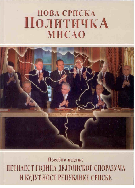| NSPM in English | |||
Was Kosovo the Good War? |
 |
 |
 |
| понедељак, 06. јул 2009. | |
|
(Monday, June 22 2009)
Given the importance of Kosovo as a model for future military actions, it is important to understand more fully what actually happened in this critical case. New information has become available in recent years from the Milosevic war crimes trial and other basic sources -- information that casts the war in a wholly different (and not so positive) light. In what follows, I will review some of these revelations, and how they have discredited widely accepted myths about the "benign" character of the Kosovo intervention. First, a bit of background: Kosovo had long been an "autonomous province" of the Republic of Serbia, initially as part of communist Yugoslavia. Within Kosovo, the population had been divided between an ethnic Albanian majority and a relatively small Serb minority, which constituted between 10 percent and 15 percent of the total population. Ethnic conflict between these two groups gradually destabilized the province. In 1989, the Republic of Serbia ended the autonomous status of Kosovo and placed it under effective martial law. A highly repressive system of rule was imposed that victimized Albanians in the province, while it favored the Serbs. Albanian efforts to escape this repression formed the basis of the armed uprising in the late 1990s, led by the Kosovo Liberation Army (KLA). These efforts ultimately triggered the 1999 NATO bombing campaign against Serbia. After the Serb defeat, an international peacekeeping force occupied Kosovo. With the peacekeepers still present, Kosovo officially seceded from Serbia and achieved full independence in 2008. A majority of the Serb population was ethnically cleansed from Kosovo, shortly after the NATO bombing, although a relatively small number of Serbs still remain in parts of the province. Myth 1: NATO began its bombing campaign only after it had made every effort to avoid war and to achieve its objectives in Kosovo through diplomatic means. The war resulted because Milosevic firmly resisted a diplomatic settlement. In reality, Milosevic was open to a diplomatic settlement, and this point is now well established by the very best sources. Specifically, Milosevic signed a series of international agreements in October 1998 that called on the Serbs to withdraw most of their forces from Kosovo and to implement a cease-fire. He also agreed to the deployment of an internationally organized Kosovo Verification Mission, which would supervise implementation of the Serb troop pullback. These agreements were brokered by U.S. diplomat Richard Holbrooke. The Holbrooke agreement gradually broke down, as fighting continued between Serb and Albanian forces and then escalated during late 1998. At the time, it was widely believed that it was the Serbs who scuttled the agreement. However, we now know that this was not the case. In fact, the Serbs implemented the Holbrooke agreement, and it was the Albanians who caused the agreement to break down. The evidence that the Serb/Yugoslav forces complied with the agreement comes from General Klaus Naumann, a German officer who played an important role in the diplomacy of this period (and who later participated in the 1999 NATO war). In 2002, Naumann appeared at the Milosevic trial as a key prosecution witness and stated the following: "The Yugoslav authorities honored the [Holbrooke] agreement ... I think one has to really pay tribute to what the Yugoslav authorities did. This was not an easy thing to bring 6,000 police officers back within twenty-four hours, but they managed." And General Naumann's views are supported by the Independent International Commission on Kosovo, which noted in its 2000 report: "Serbia initially implemented the [Holbrooke] agreement and withdrew its forces accordingly." The breakdown of the Holbrooke agreement was actually triggered by the KLA guerrillas, who used the Serb restraint as an opportunity to launch a new offensive. This strategy is noted in the following exchange, between a BBC interviewer and General Naumann. The interview cites information from NATO and from the director of the Kosovo Verification Mission, which was responsible for overseeing implementation of the Holbrooke agreement: BBC: "We've obtained confidential minutes of the North Atlantic Council or NAC, NATO's governing body. The talk was of the KLA as the ‘main initiator of the violence ... It launched what appears to be a deliberate campaign of provocation [against the Serbs].' This is how William Walker [head of the Kosovo Verification Mission] himself reported the situation then, in private" (emphasis added). General Naumann: "Ambassador Walker stated in the NAC that the majority of violations [of the Holbrooke agreement] was caused by the KLA." The record is thus clear: it was the Albanian guerillas, not the Serbs, who caused the upsurge in fighting. During February and March of 1999, the United States and several European allies organized an international peace conference - officially intended to provide a comprehensive settlement of the Kosovo conflict - that took place mostly at Rambouillet, France, outside of Paris. The Western mediators who directed the conference sought to end Serb repression in Kosovo, to re-establish Kosovo's regional autonomy (though still as a province of Serbia), and to establish an armed international peacekeeping force to oversee implementation. An independent Kosovo was not contemplated at this point. Ultimately the Rambouillet conference broke down, and this failure led directly to the NATO bombing campaign. At the time, it was widely assumed that the Serbs had refused to negotiate seriously and were determined to use military force against the Albanians. However, a close reading of the record shows that the conventional wisdom was again wrong. In fact, the Serbs remained open to a negotiated settlement, and they resorted to force when a settlement proved unachievable. Most participants in the Rambouillet conference conceded that the Serb delegation had actually accepted all (or virtually all) of the political demands that were put forward by the U.S. and European mediators. The Serbs "seemed to have embraced the political elements of the settlement, at least in principle," according to Marc Weller, a legal scholar who served as an adviser to the Albanian delegation. State Department spokesman James Rubin claims that the Serbs had agreed to "nearly every aspect of the political agreement." U.S. diplomat Christopher Hill stated that "Milosevic was open to the Rambouillet political deal." Even Madeleine Albright, though hypercritical of the Serb delegation, acknowledged that the Serbs had accepted most of the proposals for a political settlement. With regard to the more contentious implementation aspects, Milosevic himself implied that he would accept a peacekeeping force in Kosovo to supervise the agreement, led by either the UN or the Organization for Security and Cooperation in Europe. He did, however, continue to resist the idea of a NATO-led force, which the United States demanded. The available information suggests that a full settlement of the Kosovo conflict was within reach and could have been achieved at Rambouillet. What caused the agreement to break down was a new development that occurred late in the negotiation process. Specifically, the Western mediators now proposed that a "Military Annex" be added to the final agreement. The proposed addition affirmed that NATO peacekeeping forces would be deployed, and that these forces would have "free and unrestricted passage and unimpeded access throughout the FRY [Federal Republic of Yugoslavia]." This section was highly significant; it meant that not only would Kosovo be occupied by a NATO peacekeeping force, but potentially all of Serbia and all that remained of Yugoslavia would be occupied as well. After the Military Annex appeared, the Serb delegation appeared to lose all confidence in the negotiation process, and the peace talks broke down. The suspicious wording of the Military Annex was originally noted by British journalist John Pilger in 1999, during the course of the NATO bombing campaign. In response, U.S. officials have insisted that the Annex was a harmless detail, and deny that there was any effort to sabotage the peace talks. The truth telling was left to the British. In a post-war parliamentary hearing, former Defense Minister of State John Gilbert affirmed that key negotiators were in fact seeking to sabotage the conference. Gilbert was the number two figure in the British Defense Ministry, with a specific responsibility for intelligence gathering, and he supported the war. He is surely a credible source. With regard to the motives of the negotiators, he offered this observation: "I think certain people were spoiling for a fight in NATO at that time ... we were at a point when some people felt that something had to be done [against Serbia], so you just provoked a fight." With regard to the peace terms themselves, he said, "I think the terms put to Milosevic at Rambouillet were absolutely intolerable: How could he possibly accept them? It was quite deliberate" (emphasis added). Lord Gilbert did not specifically mention the Military Annex (and its clause about NATO access to all of Yugoslavia), but it is easy to see that the Annex fit in well with the overall picture of provocation that Gilbert described. And it seems likely that the United States played a major role in crafting the Military Annex, and thus sabotaging the talks: in memoirs, General Wesley Clark revealed that he personally helped with the drafting. In any case, the advent of the Military Annex undermined the prospect of a peaceful settlement. I have elsewhere discussed at length the Clinton administration's motives for provoking a war; in this article, I will provide a shortened explanation. Basically, the United States was seeking a new justification for the North Atlantic Treaty Organization, which seemed to lack any plausible function since the fall of the Berlin Wall. The "successful" intervention in Kosovo played a key role in affirming NATO's importance for the post-Cold War period, and providing it with a new function. Whatever the motives, the record suggests that the Clinton administration was seeking a pretext for war with Serbia. The collapse of peace talks at Rambouillet offered this pretext. Myth 2: The Kosovo conflict was a morally simple case of Serb oppressors and Albanian victims. The 1999 war was widely portrayed at the time as a small-scale replay of World War II, with the Serbs in the role of Nazi aggressors and the Albanians as the Jews, and this image was a central theme of Samantha Power's widely influential book, "A Problem from Hell": America and the Age of Genocide. It is certainly true that the Serbs had an ugly record of oppression and violence against the Albanian ethnic group, and that Milosevic himself bears considerable responsibility for orchestrating this oppression. This part of the story is largely accurate, and little has emerged since to refute that image. The problem is that the Albanian political groups backed by the United States in the war were not a great deal better. While there were some relatively decent and nonviolent Albanian political groups that were important in the early phase of this conflict, the principal group to receive direct U.S. support - the same group that later formed the government of independent Kosovo -- was the Kosovo Liberation Army. The KLA had a record of viciousness and racism that differed little from that of Milosevic's forces. Attacking Serb civilians through terrorist acts was always a central feature of the KLA's military strategy. The terrorist nature of KLA strategy was widely known among Western officials; even a prosecution witness at the Milosevic trial acknowledged this fact. British parliamentarian Paddy Ashdown, who was extensively involved in the Kosovo diplomacy, testified about the KLA's terrorist strategy. The transcript of Ashdown's cross-examination includes the following exchange: Milosevic: "It was a well-known fact that these [KLA] were terrorists, that this was a terrorist organization." Ashdown: "Mr. Milosevic, I never denied that it was a terrorist organization. According to journalist Stacy Sullivan, who interviewed many KLA figures, the guerrillas "hit the Serb housing settlements, and they claimed responsibility for downing a civilian aircraft and planting a car bomb that injured the rector of the university. By definition, these were terrorist acts." The purpose of such terrorist tactics was to provoke Serb retaliation, which helped to feed a cycle of violence. These tactics were widely recognized. Even Madeleine Albright, whose memoirs focus almost exclusively on Serb savagery, briefly concedes that the KLA "seemed intent on provoking a massive Serb response so that international intervention would be unavoidable" (emphasis added). Needless to say, this strategy - of baiting the Serbs into attacking Albanian civilians, and thus increasing pressure for external intervention - worked quite well. This is precisely the scenario that played out during the period 1998-1999, leading to NATO intervention and a KLA victory. It has long been assumed that, throughout the conflict, it was the Serbs that had perpetrated most of the violence. In fact there were extended periods when the Albanians were the main perpetrators. This point was noted by British Defense Minister George Robertson during parliamentary hearings after the war ended. Lord Robertson stated that up until January 1999, "the KLA were responsible for more deaths in Kosovo than the Yugoslav authorities had been." In later phases of the war, it was clearly the Serbs who were the main perpetrators of violence. Beginning in January 1999, there was a substantial spike of Serb attacks, with an ugly massacre in the Albanian village of Racak and other outrages during the last weeks of this first phase of war. And there was a huge escalation of Serb atrocities that took place during the NATO bombing -- an escalation that produced horrific results. Nevertheless, Lord Robertson suggests that initially it was the Albanians, not the Serbs, who committed the worst violence. The diaries of Tony Blair's press spokesman, Alistair Campbell, also emphasize the amoral character of the KLA, and how this fact was well known among British officials. According to Campbell, Blair and his foreign minister Robin Cook both believed "the KLA ... were not much better than the Serbs." Perhaps the most damning indictment of the KLA was the way it behaved once the Serb forces were defeated in June 1999. Following the Serb defeat, the NATO and UN peacekeepers effectively placed the KLA in power throughout most of Kosovo, and the Albanian guerrillas promptly used their newfound power to ethnically cleanse the Serbs through a campaign of violence and intimidation. This campaign of terror was tracked by the Organization for Security and Cooperation in Europe (OSCE), and has been described in the memoirs of former UN officials Iain King and Whit Mason: The summer of 1999 was a season of vengeance and raw predatory violence. The OSCE collected dozens of horror stories. A deaf and mute Roma man was abducted from his home, because his family had allegedly cooperated with the former [Serb] authorities. A 44-year-old Serb man was "beaten to death with metal sticks by a Kosovo Albanian mob"... Serbs were shot and killed while working in their fields. These attacks and dozens of others like them were reported by field staff working with the OSCE. All these attacks occurred when NATO-led [peacekeepers were] responsible for security in Kosovo. Between 400 and 700 Serbs were murdered in the first eight months after the NATO victory, according to estimates published in the London Sunday Times. The dead included Serbs as well as Roma. Partly because of these attacks - which the NATO forces did little to stop - nearly a quarter of a million Serbs, Roma, and other despised ethnic groups fled Kosovo. The Albanians' longstanding objective of an ethnically "clean" Kosovo, free of Serbs, was achieved in large areas. It is thus a myth to view this war as a simple case of Serb aggressors and Albanian victims. In reality both sides were quite vicious. It is of course true that, overall, the Serbs committed more atrocities and ethnically cleansed even larger populations than the Albanians did. And needless to say, ethnic Serb armies committed many horrific crimes elsewhere in the Balkans, including the 1995 Srebrenica massacre. But none of this can excuse the crimes of the KLA, or the fact that U.S. policy was complicit in some of these crimes through its backing of the KLA. Now, ten years after the fact, we should not whitewash the crimes of either side. When the fighting ended in 1999, investigators from the International Criminal Tribunal for the Former Yugoslavia sought to investigate crimes committed by both sides during the war. The former chief prosecutor at the tribunal, Swiss lawyer Carla Del Ponte, described the challenges that she faced, in her recently published memoirs. According to Del Ponte, there were repeated attacks and threats of violence that were directed at anyone who cooperated with the international investigations of KLA atrocities. It is evident that Del Ponte herself was intimidated: "Some Swiss compatriots even cautioned against discussing certain Albanian-related issues in this memoir, and I am discussing them here only with extreme care." The KLA had many other unattractive features, including associations with al-Qaida (which had personnel present in Kosovo) and international narcotics networks. Overall, it seems fair to say that the KLA had an appalling record. Myth 3: The NATO air attacks prevented even greater Serb atrocities, and thus had a positive effect on the human rights situation in Kosovo. In fact, the bombing campaign increased the scale of Serb atrocities. Up until the bombing, the total number of persons killed in the war -- including both Serbs and Albanians, civilians and soldiers -- totaled 2,000. The number of Albanian civilians murdered by Serb forces has never been properly estimated, but the total was probably in the hundreds. During the bombing campaign, however, there was a huge escalation in Serb-directed violence. The Serbs could do little to protect themselves from the NATO attacks, so they took out their frustrations on the relatively defenseless Albanians. Let us review the chronology: By mid-March of 1999, it was clear that the negotiation process had irretrievably broken down, and that NATO was preparing to bomb. On March 19, the Kosovo Verification Force began leaving the province - a sign that bombing was immanent. The following day, March 20, Serb forces began a large-scale offensive in Kosovo, generating ugly atrocities. And on March 24, NATO actually began its ten-week bombing campaign, which led to still greater Serb atrocities. This chronology strongly suggests that the NATO action itself was a key cause for this upsurge in violence. It should also be noted that the Joint Chiefs of Staff had warned President Clinton that any bombing campaign might cause Serb revenge attacks and augmented atrocities. The atrocities had been predicted in advance. And when the bombing actually occurred, the Serb forces did in fact commit substantial atrocities: approximately 10,000 persons were killed by Serb security forces during the NATO campaign. By the end of the war, around 90 percent of the Albanian population had been displaced. The primary moral responsibility must rest with the Serb forces who committed the atrocities, and with Milosevic himself, who directed them. However, NATO also must bear some responsibility for recklessly creating a situation that virtually guaranteed atrocities. And the NATO campaign produced other calamities: the bombing itself killed between 500 and 2,000 civilians, according to Tim Judah of the BBC. Even if we accept the lower figure, then the NATO bombing killed approximately as many civilians as all the Serb-directed actions that preceded the bombing. NATO's strategy entailed "hitting [Serb] civilian infrastructure," according to the memoirs of General Rupert Smith, who served as NATO deputy commander during the war. And when the war was over, the Albanians launched a wave of reprisals and ethnic cleansing, resulting in still greater atrocities, as noted above. If the NATO operation sought to establish the principle that ethnic cleansing is inadmissible as a means of settling conflicts, then the operation was a conspicuous failure. Conclusion The most disturbing aspect of the Kosovo case is that a purported humanitarian intervention served mainly to increase the scale of atrocities. In this respect, the Kosovo war has much in common with the 2003 Iraq invasion, which also was sold to the public (in part) as a humanitarian effort to "save" the Iraqi people from a violent dictator. In retrospect, however, it seems likely that the invasion caused as many or possibly more deaths than the total number killed by Saddam Hussein. The main lesson of the Kosovo and Iraq experiences is that military actions - whether we call them "humanitarian" or not - retain the potential to increase human misery. The advocates of humanitarian intervention give too little consideration to this danger. It might be worth recalling the medical phrase, "first do no harm." Among physicians, it has long been recognized that medical action has the potential to make patients worse off than before. The fact that a patient is suffering is, by itself, insufficient reason to operate, since operating runs the risk of increasing his or her suffering. Perhaps the same cautions should apply with regard to military interventions. Certainly, we should avoid risky actions that are likely to increase the death toll (as actually occurred in Kosovo). First, we should do no harm. (David N. Gibbs teaches history and political science at the University of Arizona. His previous publications include The Political Economy of Third World Intervention - Univ. of Chicago Press, 1991. This article draws from David N. Gibbs's new book, First Do No Harm: Humanitarian Intervention and the Destruction of Yugoslavia - Vanderbilt University Press, June 2009, especially from chapter 7. Readers interested in obtaining full source citations can find most of them in the book or request them from the author at Ова адреса ел.поште заштићена је од спам напада, треба омогућити ЈаваСкрипт да бисте је видели .) |
Од истог аутора
Остали чланци у рубрици
- Playing With Fire in Ukraine
- Kosovo as a res extra commercium and the alchemy of colonization
- The Balkans XX years after NATO aggression: the case of the Republic of Srpska – past, present and future
- Из архиве - Remarks Before the Foreign Affairs Committee of the European Parliament
- Dysfunction in the Balkans - Can the Post-Yugoslav Settlement Survive?
- Serbia’s latest would-be savior is a modernizer, a strongman - or both
- Why the Ukraine Crisis Is the West’s Fault
- The Ghosts of World War I Circle over Ukraine
- Nato's action plan in Ukraine is right out of Dr Strangelove
- Why Yanukovych Said No to Europe

.jpg)
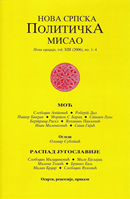
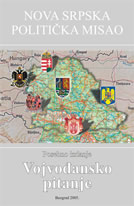
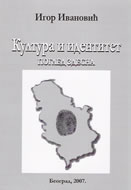
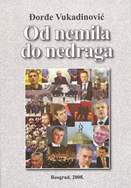




 As the 1999 NATO war against Serbia reaches its tenth anniversary, it is being recalled with a measure of nostalgia. The Kosovo war is remembered as the "good war" - a genuinely moral military action, which offers a reassuring contrast with the Iraq fiasco. The Kosovo war was undertaken (so the argument goes) only as a last resort, to restrain an unpleasant dictator (Slobodan Milosevic) who would only respond to force. And the war produced positive results, in the sense that Kosovo was freed from Serb oppression and Milosevic was soon overthrown. Now, a decade later, the Kosovo war is recalled as an exemplary case of humanitarian intervention, and is widely viewed as a model for possible interventions in Darfur and elsewhere. Indeed some of the key figures in the Obama administration, notably Samantha Power, have advocated that "humanitarian intervention" on the model of Kosovo should be a basic theme of U.S. policy.
As the 1999 NATO war against Serbia reaches its tenth anniversary, it is being recalled with a measure of nostalgia. The Kosovo war is remembered as the "good war" - a genuinely moral military action, which offers a reassuring contrast with the Iraq fiasco. The Kosovo war was undertaken (so the argument goes) only as a last resort, to restrain an unpleasant dictator (Slobodan Milosevic) who would only respond to force. And the war produced positive results, in the sense that Kosovo was freed from Serb oppression and Milosevic was soon overthrown. Now, a decade later, the Kosovo war is recalled as an exemplary case of humanitarian intervention, and is widely viewed as a model for possible interventions in Darfur and elsewhere. Indeed some of the key figures in the Obama administration, notably Samantha Power, have advocated that "humanitarian intervention" on the model of Kosovo should be a basic theme of U.S. policy.